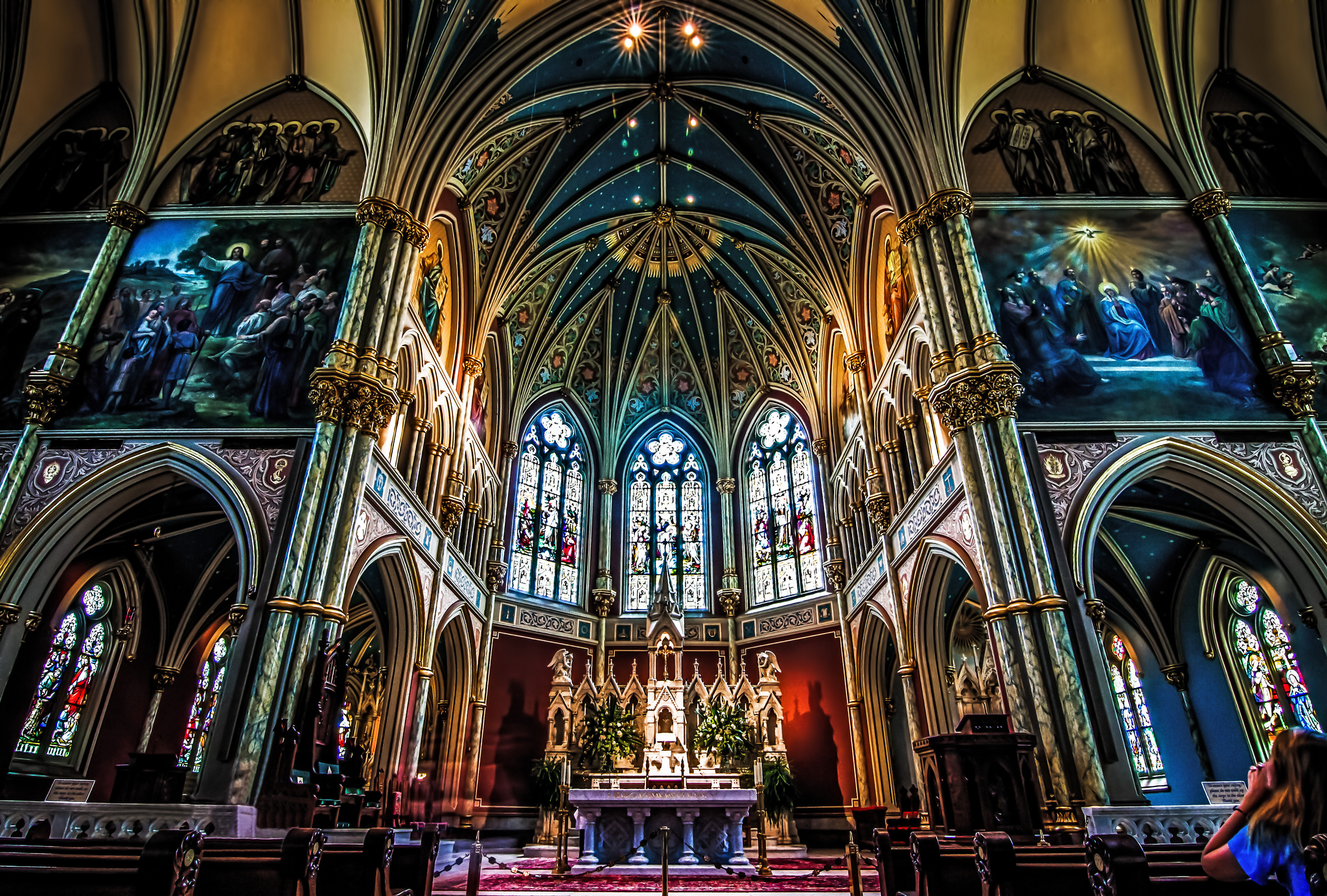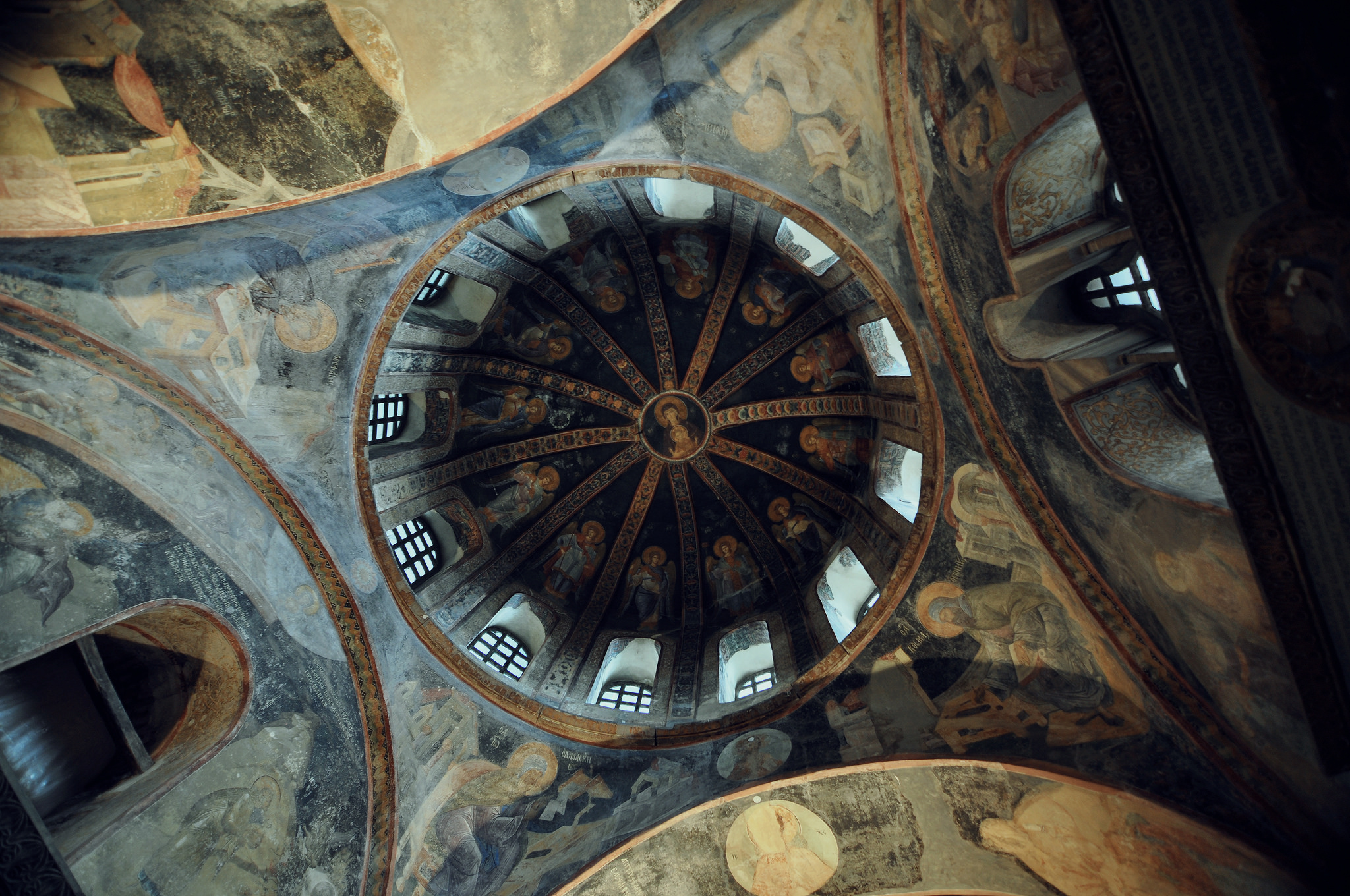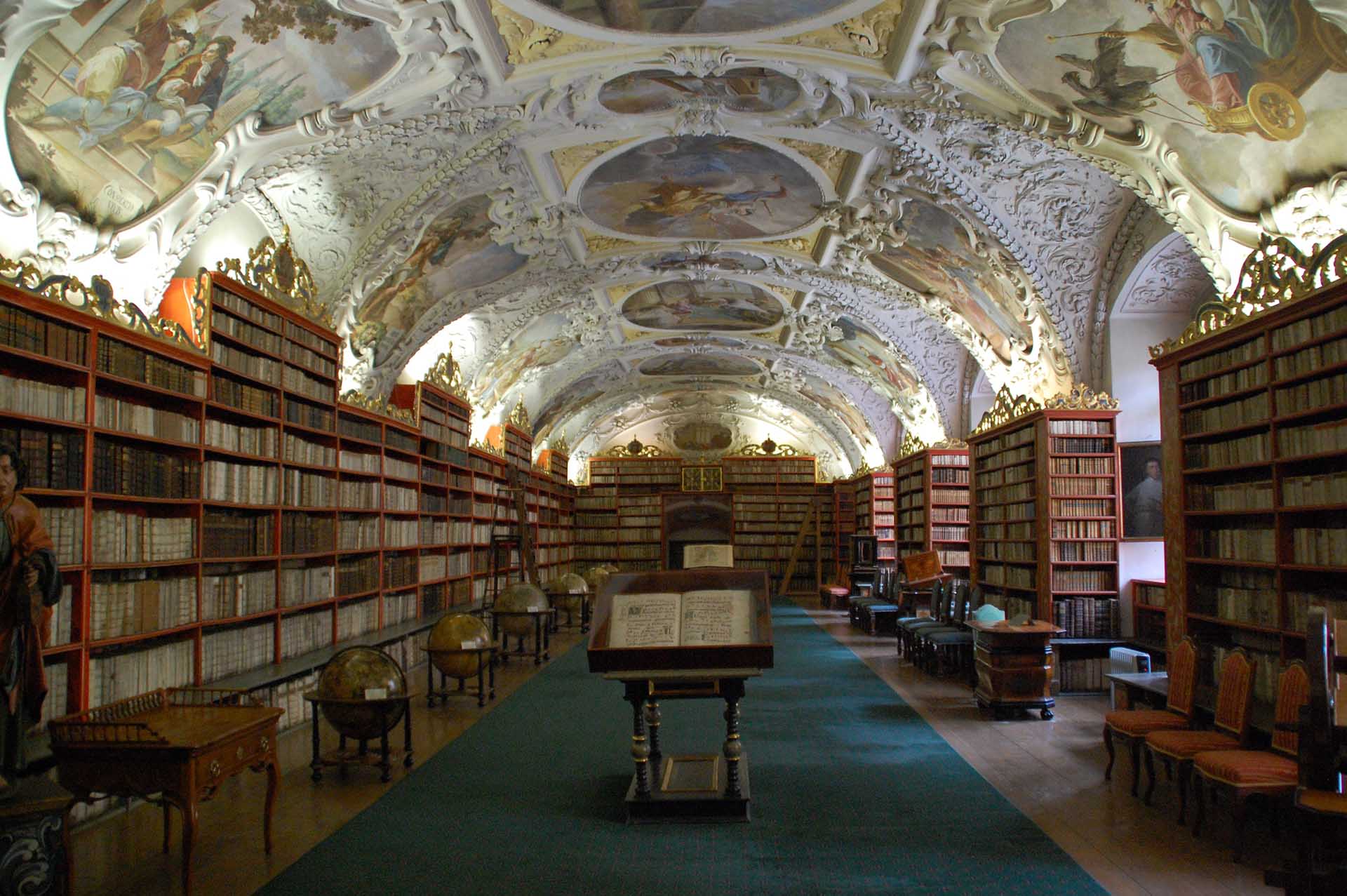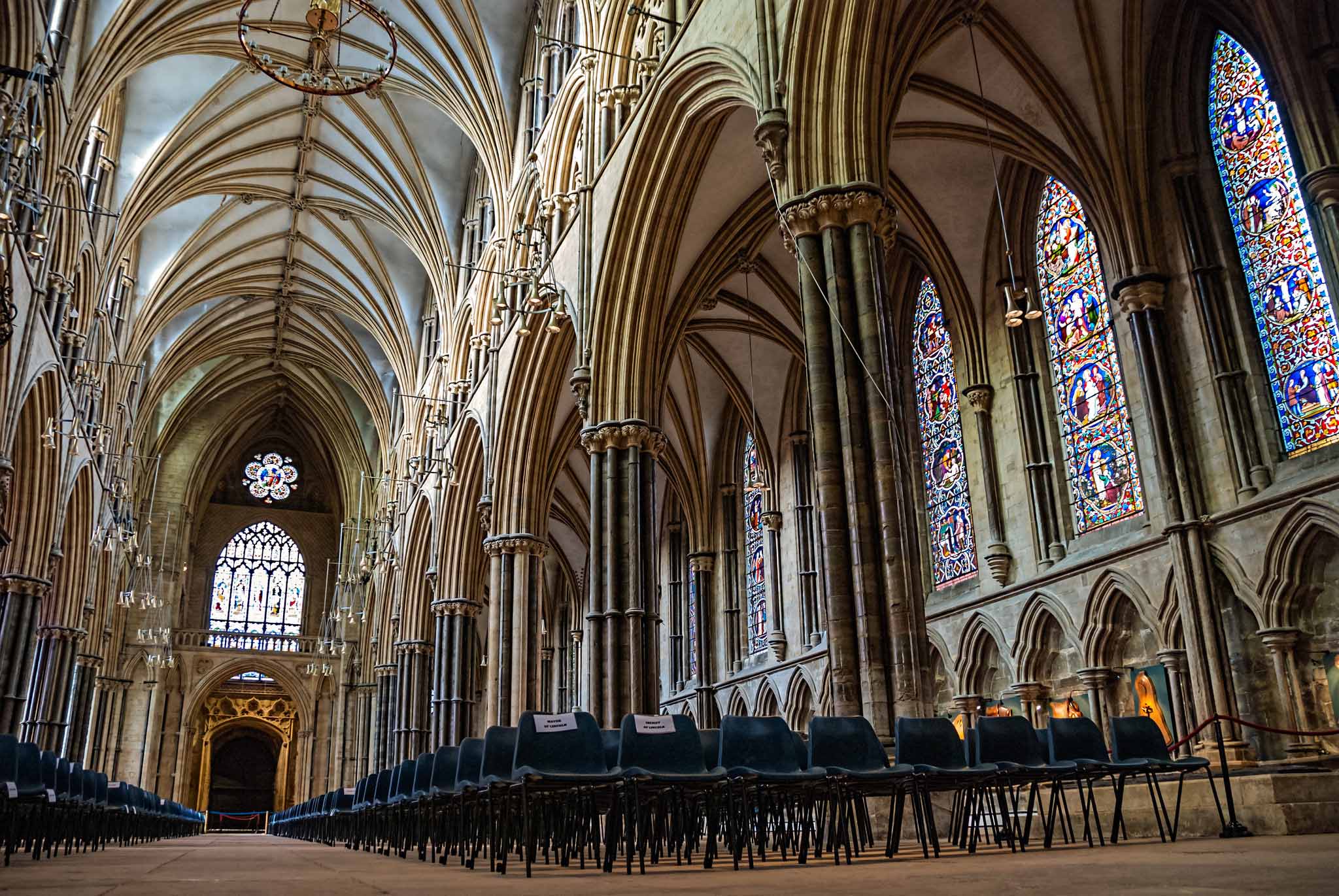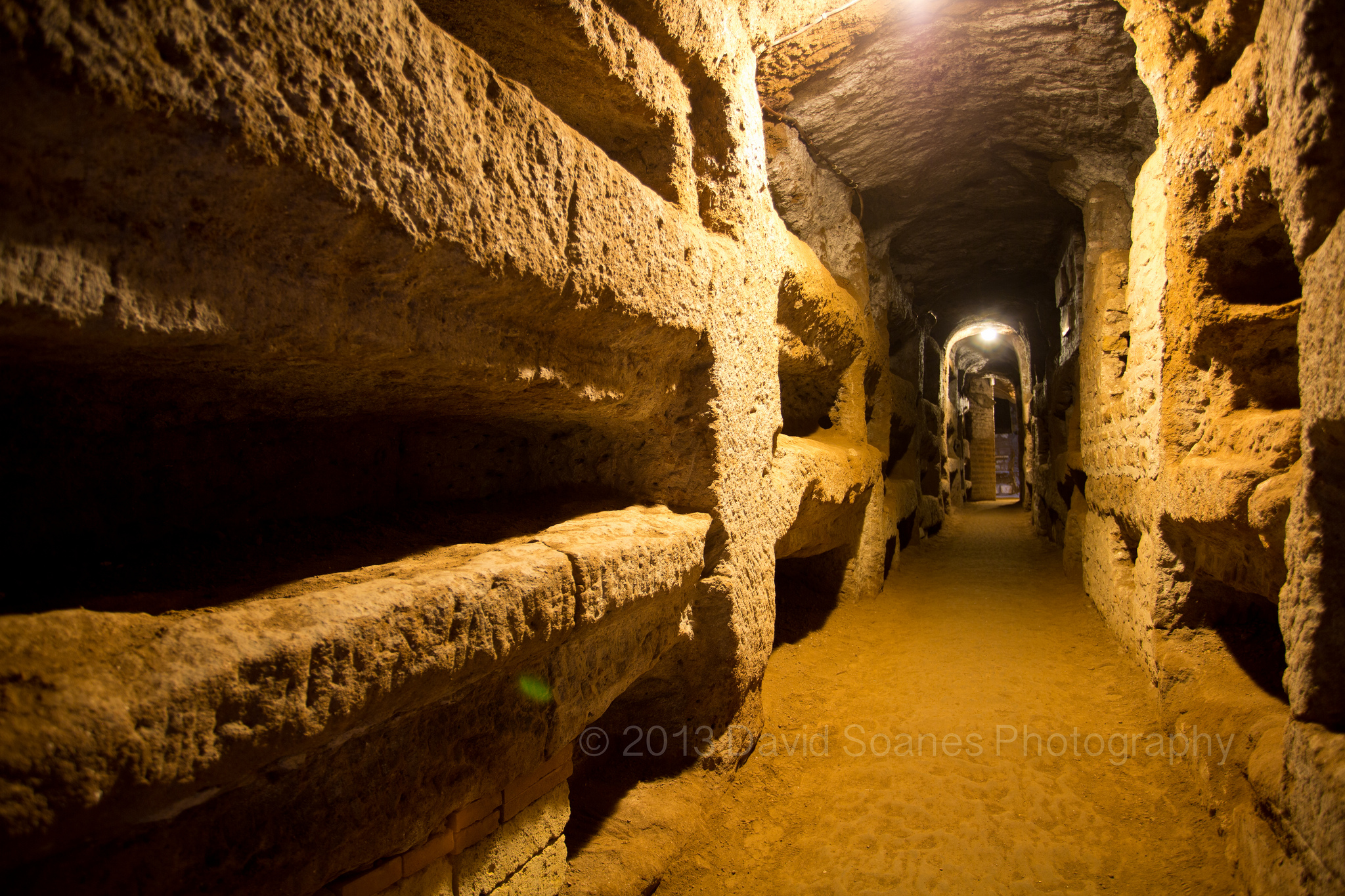+Four Holy Crowned Martyrs+
Traditionalist sects and their baseless theories continue to be exposed on this site for what they truly are: a contradiction of Church law and teaching. This lack of response or interest from those calling themselves Catholic reveals a frightening indifference regarding their eternal salvation. In fact, their rationalizations, arguments and objections continue even as the evidence against them mounts. In theological terms, their indifference has another definition: resisting the known truth, a sin against the Holy Ghost that is rarely pardoned.
This week an Anglican cleric submitted a comment for approval that will not be posted, but which resulted in some fascinating and fruitful research. In his commentary, the Anglican submitting the comment likened Home Aloners to “the priestless (Безпоповцы) Old Believers and the French Petite Eglise,” (a Gallicanist sect, some of whose members also embraced Jansenism).
Fortunately, we possess an entire volume on the Old Believers (The Old Believers and the World of Antichrist, Robert O. Crummey, University of Wisconsin Press, 1970). The book chronicles the history of members of the Russian Orthodox Church who broke away from this schismatic sect following the implementation of certain liturgical reforms. Their then-reigning Patriarch, Nikon, reformed the Psalter, ordered the members of the Russian Church to make the Sign of the Cross with three fingers instead of two and instituted some other minor changes the author of the book calls “miniscule.” Rejecting the reforms, several Orthodox bishops and clergy separated themselves from the church and set up their own religious communities. Eventually their clergy members passed away and they were left priestless, yet continued as a sect in Russia even after the 1917 Communist takeover.
The Anglican comments: “The Old Believers have happily gone back into communion with the Russian Orthodox Church, and they are allowed to keep their liturgical particularities.” This is what the absorption by Rome of the SSPX is all about: compromise. It will be repeated when remaining Traditionalists are allowed to celebrate their liturgy under the all-inclusive one-world church umbrella offered by the Novus Ordo. The Anglican sums it up nicely: “The way ahead is accepting a via media between tradition and organic change whilst resisting rupture and contradiction.” Really. This is the same broken record titled “Reunion” played by the Anglicans since the Reformation. (Read Liberalism’s Shameful Legacy and the Rise of Socialism on this website.)
Since this schismatic sect was never Catholic to begin with, it is difficult to see where the comparison with Home Aloners comes in. For stay-at-home Catholics stand solely on the dogmas of faith and do not base their separation from the current Novus Ordo church primarily on the falsification of the liturgy. A better comparison here would be to Traditionalists in general, particularly those who question Pope Pius XII’s validity as pope based on the Holy Week changes introduced in the 1950s. The main focus of all these Traditionalist sects is the loss of the Latin Tridentine Mass; the focus of those who avoid Traditionalist sects and keep their faith at home is the loss of the Church as a whole, embodied in the papacy.
In conclusion the Anglican asks: “How long will a person persevere in such conditions before lapsing into modern life like the rest of his family and friends?” Maybe this man should ask those in the countries behind the Iron Curtain, who the Communists forced to live without priests for an entire lifetime (except, perhaps, in rare instances). True Catholics call it white martyrdom and the practice of final perseverance.
Petit Eglise defined
Now to the comment on the Petit Eglise, or little church, which came into being as a result of the French Revolution. The 1911 Catholic Encyclopedia describes this sect as follows: “A schism of another nature and of less importance was that of the so-called Petite Église or the Incommunicants, formed at the beginning of the nineteenth century by groups who were dissatisfied with the Concordat and the concordatory clergy. In the provinces of the west of France the party acquired a certain stability from 1801 to 1815; at the latter date it had become a distinct sect. It languished on till about 1830, and eventually became extinct for lack of priests to perpetuate it” (http://www.newadvent.org/cathen/13529a.htm).
1802 French Concordat
What exactly was the Concordat? The French Concordat between Pope Pius VII and Napoleon Bonaparte was an agreement that restored Catholic order to France in the wake of the French Revolution. The Catholic Encyclopedia under this title states: “The concordat, notwithstanding the addition of the Organic Article [unfavorable commentary made by the French government-Ed.], must be credited with having restored peace to the consciences of the French people on the very morrow of the Revolution. To it also was due the reorganization of Catholicism in France, under the protection of the Holy See. It was also of great moment in the history of the Church. Only a few years after Josephinism and Febronianism had disputed the pope’s rights to govern the Church, the Papacy and the Revolution, in the persons of Pius VII and Napoleon, came to an understanding which gave France a new episcopate and marked the final defeat of Gallicanism.”
The article further explains the newly-established French episcopate was established following the abolition of “the 136 sees of ancient France, a certain number [of which] had lost their titulars by death; the titulars of many others had been forced to emigrate. In Paris the Cathedral of Notre-Dame and the church of St-Sulpice were in the possession of ‘constitutional’ clergy,” removed from their offices by the edict of Pope Pius VI (Charitas). Different reports about the number of new bishops established under the concordat make it difficult to determine the true number. We have 83, 60 and 50, respectively. Regardless of the number, the pope believed the situation prior to the concordat justified such a drastic change.
The churches in France were taken over by hostile forces or left in ruins by the revolutionaries. The lawful clergy had been banished or were in hiding. Seminaries in the country no longer existed. Catholics were sore pressed to know where to go or how to resume a normal Catholic life. Even Napoleon saw the benefits of remedying this situation, although only on his own terms. He controlled the negotiations and caused the Holy See much grief, eventually kidnapping Pope Pius VII. The pope was later allowed to return to Rome.
Pius VI’s ‘Charitas’ and the extent of papal power
In order to rectify the sad situation in France, Pope Pius VII demanded that all those holding episcopal sees in the country resign. Initially, 14 bishops residing in London refused to relinquish their sees. Later, five of these same bishops tendered their resignations, leaving nine. Pope Pius VII’s secretary, Cardinal Consalvi, who was conducting the negotiations with Napoleon on behalf of Pope Pius VII, reported Nov. 30, 1801 that a total of 27 bishops had resigned and others would follow. He noted that the reorganization of the episcopal sees would result in “the annihilation of all jurisdiction in the incumbents, (a necessary sequel to the suppression of old sees and the creation of new ones) ones).” This will later be applied to what is said below. These comments are recorded in Artaud de Montor’s The Lives and Times of the Popes, Vol. VIII, Catholic Publication Society, 1911. There we find 266 pages devoted to Pope Pius VII, including several of Cardinal Consalvi’s verbatim communications to Napoleon. One of these addressed Napoleon’s nomination of 15 constitutional bishops to take possession of the newly created sees, a right guaranteed to him in the concordance. Cardinal Consalvi wrote to the emperor as follows:
1.”The case of the constitutional bishops is already decided by the Apostolic See, in the dogmatic brief of Pius VI beginning ‘Charitas.’ That dogmatic definition cannot be reformed. His Holiness may mitigate the penalties therein inflicted on the said bishops, but the judgment of his predecessor is irrefragable.“
2. “The Catholic Church and the whole episcopal body has received and respected this judgment of the Holy See… The Civil Constitution of the Clergy was condemned by the same dogmatic judgment of Pius VI, as containing errors against the deposit of faith… His Holiness observes that, as his predecessor found it impossible to yield to the request made… it is equally impossible for him to admit to his communion and invest with canonical constitution the constitutionals, who, contrary to the dogmatic decision contained in said briefs, persist in maintaining the error condemned in them, refuse to acknowledge their illegitimate character, and to adhere and submit to the judgment pronounced by the Holy See.
3. “A matter of faith is in question. His Holiness observes that, according to the rules of faith, it belongs to him, and to no other, to judge what the constitutional bishops have done… by pronouncing the profession of faith and the oath, and to confer institution if they are nominated… The rules and constant practice of the Church have always required that none should be received into its bosom, much less assigned as pastors, who have left any heresy or schism, unless they avow expressly that they condemn especially their errors.”
Pope Pius IX, in his condemnation of the Old Catholic Bishop Joseph Hubert Reinken, likewise taught in his encyclical Etsi Multa: “As even the rudiments of Catholic faith declare, no one can be considered a bishop who is not linked in communion of faith and love with Peter, upon whom is built the Church of Christ; who does not adhere to the supreme Pastor to whom the sheep of Christ are committed to be pastured… But these men having progressed more boldly in the ways of wickedness and destruction, as happens to heretical sects from God’s just judgment, have wished to create a hierarchy also for themselves, as we have intimated. They have chosen and set up a pseudo-bishop, a certain notorious apostate from the Catholic faith, Joseph Hubert Reinkens. So that nothing be lacking in their impudence, for his consecration they have had refuge to those very Jansenists of Utrecht, whom they themselves, before they separated from the Church, considered as heretics and schismatics…
“We declare the election of the said Joseph Hubert Reinkens, performed against the sanctions of the holy canons to be illicit, null, and void. We furthermore declare his consecration sacrilegious. Therefore, by the authority of Almighty God, We excommunicate and hold as anathema Joseph Hubert himself and all those who attempted to choose him, and who aided in his sacrilegious consecration. We additionally excommunicate whoever has adhered to them and belonging to their party has furnished help, favor, aid, or consent.” This is in complete accord with everything decreed by Pope Pius VI.
Certain Traditionalists have insisted that the rigors of Pope Pius VI’s condemnation of the constitutionalists later was relaxed, and that therefore Pius VI’s Charitas was not dogmatic, but the pope states the exact opposite here. Let them present proofs of such relaxation or close their mouths. Below is produced the exact content of Charitas as applies to this matter:
“For the right of ordaining bishops belongs only to the Apostolic See, as the Council of Trent declares; it cannot be assumed by any bishop or metropolitan without obliging Us to declare as schismatic both those who ordain and those who are ordained thus invalidating their future actions.” (see Can. 2265 §1 [2-3]. This means the future actions of any bishops as well as any priests ordained by such men are null and void.)
Pope Pius VI continues: “We therefore severely forbid the said Expilly and the other wickedly elected and illicitly consecrated men, under this punishment of suspension, to assume episcopal jurisdiction or any other authority for the guidance of souls since they have never received it. They must not grant dimissorial letters for ordinations. Nor must they appoint, depute, or confirm pastors, vicars, missionaries, helpers, functionaries, ministers, or others, whatever their title, for the care of souls and the administration of the Sacraments under any pretext of necessity whatsoever… We declare and proclaim publicly that all their dimissorial letters and deputations or confirmations, past and future, as well as all their rash proceedings and their consequences, are utterly void and without force.”
Hear ye, hear ye Traditionalists. All your actions are voided not only by these popes above, but also by Pope Pius XII, who nullified all acts contrary to papal laws, particularly those stated in his infallible 1945 election law Vacantis Apostolicae Sedis.
Origin and function of the Petit Eglise
With all the above in mind, we now go back to address the previous reference to the Petit Eglise. More on this sect is found in the Encyclopedia of Religion and Ethics, Editor James Hastings and others, Vol. IX, 1917, Charles Scribner and Sons, New York; by Georges Volet. Here we find some amazing facts. This work relates that after Pope Pius VII issued his bull, Qui Christi Domini, those possessing episcopal sees in exile from France by the revolutionary government had 10 days to turn in their resignations. (Cardinal Consalvi said in de Montor’s work Pope Pius VII later lengthened this time period in case they did not receive the request.) When the 14 bishops in London received the pope’s orders, they mailed Pope Pius VII a refusal, accompanied by a letter explaining why they had the right to retain their episcopal sees.
The reasons they listed were that they are bishops by Divine right (a statement later qualified by Pope Pius XII to read that while this is the case, they still are subject to the Roman Pontiff). They then state they can be separated from their sees only by death and a valid resignation which they have no intention of giving, although later five of them did relent. They professed that the pope’s primacy derived from St. Peter, but did not acknowledge his ultimate power over them, an article of faith later defined by the Vatican Council. They also claimed the concordat was destructive of religion, earning them the name of anti-concordataires. On receiving the letter, de Montor records, Pope Pius VII told Cardinal Consalvi: “’We are entering on a sea of affliction.” Consalvi replied: “Those who write to us are banished by law and kept out of France by another authority than that which they honor… But France contains so many Catholics who have no pastors.”
In 1803, the article says, 38 London bishops addressed a “canonical remonstrance” to Pope Pius VII. At least nine of these bishops continued to administer their dioceses through the priests sharing their Gallicanist and anti-concordataires views and refused to resign. Thus was the Petit Eglise born. The encyclopedia article calls it “remarkable” that during this time period, the bishops in London did not see fit to ordain any priests, saying that “perhaps” they believed that the concordat [or Pope Pius VII-Ed.] would be short-lived. Or was it possible that these bishops knew they would be exposing their followers to sacrilegious Sacraments if they ordained priests, since Pope Pius VI nullified any acts performed by such French clergy in his Charitas? Over time, the group was eventually reduced to just one bishop. But even given the prospective situation of retaining no priests to carry on ministering to the faithful, he refused to ordain candidates presented to him for such work, objecting that they held Jansenist opinions. He thus demonstrated a restraint not exercised by Traditionalists.
A question was posed sometime after 1830, [most likely to Rome, or perhaps to one of the newly-appointed bishops; the article does not make this clear], by some of the remaining Petit Eglise priests that since “the pre-concordat bishops were dead, the bishops of the concordat ought not to be considered as lawful.” The answer they received and the quote that arrived with it should settle the Home Alone question for good and forever, but of course it will not. The secular encyclopedia states: “A negative answer was arrived at, on the principle that the apostolic succession having been broken, the effects of the rupture were enduring.” (Remember the words of Cardinal Consalvi above regarding Pope Pius VII’s intention to remove jurisdiction from those bishops who previously held the episcopal sees.) “The decisions of ancient councils were also appealed to. One of these, held in Benevento in 1087 by (Bl.) Pope Victor III, had decreed as follows:
‘The Sacraments of Penance and Communion are to be received only at the hands of a Catholic priest; if none such is to be found, it is better to remain without communion and to receive it invisibly from Our Lord.’“ And a doubtfully Catholic priest is no priest. De Montor records that Victor III forbade Catholics to receive penance or the Eucharist “at the hands of heretics or simoniacs.” According to the Catholic Encyclopedia, it was during the 1087 Council at Benevento, one of several held there over a 30-year timespan, that “Victor III excommunicated Guibert, the antipope.” (In excommunicating Guibert, who had reigned in Rome for three years, it would appear that Pope Victor was warning Catholics not to receive the Sacraments from any of those clerics created by this antipope.)
This judgment approved by Pope Victor III was deduced from what he had experienced at the hands of an antipope during his brief reign. The Catholic Encyclopedia states that “ Victor III …was compelled, eight days after his coronation in St. Peter’s (3 May, 1087), to fly from Rome before the partisans of Guibert …of Ravenna, antipope Clement II.I” (Bl.) Pope Victor III, known as the Benedictine abbot Desiderius before his election, “was the greatest of all the abbots of Monte Cassino, with the exception of the monastery’s founder, St. Benedict. As such he won for himself ‘imperishable fame’ (Gregorovius).” Reluctant to become pope in the first place, he agreed to return to Rome only if he could retain his position as abbot of Monte Cassino.
When the Petit Eglise bishops and priests finally passed on, members of this sect — who refused to recognize the bishops appointed by Pope Pius VII and so were in schism — were left on their own. Some of them were heretics as well, as their own bishop acknowledged. The article reports they kept the faith in their homes, and most had a private chapel there. They read the offices of the Church and the ancient liturgy of Lyons. They engaged in the reading of Holy Scripture and works of piety. Their children were instructed from the diocesan catechism and made their First (spiritual) Communion. They appointed one of their own to conduct liturgical prayers, funerals and baptisms, the only sacrament they administered. This is what the Japanese also did during their persecution in the 1600s.
Some of the Petit Eglise communities were quite large, the article reports, one being that of Lyons and the other located in Deux-Sevres (Courlay) and La Vendee. One sported some 3,000 members. According to the encyclopedia article by Voltes, “In 1869, when the Vatican Council was sitting, these two congregations petitioned Rome for the recognition of the pre-concordat bishops, as the condition of their own return to the Roman obedience. But the attempt failed, and the Council, by declaring the pope to be immediately the bishop of each diocese, laid down a principle the direct contrary of that by which the opponents of the Concordat had been guided.” Therefore, Rome has spoken and the case is closed. The Anglican cleric comments that the Petit Eglise has now been almost entirely absorbed by the Novus Ordo Church and other sects.
Conclusion
And so the Anglican commentator’s analogy fails in this case as well. Stay-at-home — Catacomb — Catholics are all about obeying everything taught by the continual magisterium. They live in a timeframe where there IS no true pope, and this was not the case with the Petit Eglise. Catacomb Catholics rest their entire case on the fact that John 23 and subsequently all his “successors,” (according to Canon Law) were not and never could have been elected to the papacy for the very reasons stated above by Pope Pius VII — their very Catholicity and the Catholicity of their electors was in question. The case for this has been presented in very great detail and from the most trustworthy sources. It is the unanimous opinion of theologians that when there are very serious reasons for doubting a pope was not validly elected, then there is no schism and no sin in refusing to recognize him. If there is positive doubt about such validity, St. Robert Bellarmine teaches, this successfully disqualifies such a man as pope and a new election must be held. But the Petit Eglise never questioned the pope’s validity, only his authority over their bishops.
The answers to these questions regarding validity have been examined and explained for well over a decade on this site. Like the followers of “Gregory XVIII,” no one will listen. As we read in the book of Apocalypse, Ch. 16, despite the plagues God sends in the end times, they will not depart from their evil ways and do penance. Doing penance and making reparation, Catacomb Catholics know, is the only way to keep company with Our Lord’s Sorrowful Mother, and St. John, the beloved Apostle, at the Foot of the Cross. Considering what Christ suffered for us, it is the least we can do.
(All emphasis within quotes was added by the author.)
